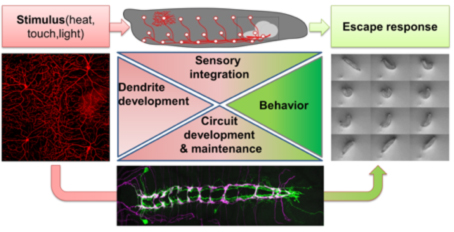Welcome to the Soba lab
The development and maintenance of neuronal networks is the basis for brain function. To develop and properly connect our intricate network of the estimated 86 billion neurons requires precise regulation of wiring in time and space. Yet how neurons develop their individual morphology, find the right partners, and maintain functional connectivity allowing us to learn and remember throughout life is still not well understood.
To get insight into these questions we use Drosophila melanogaster larvae as a model system. The approximately 10.000 functional neurons in the larval brain form a simple yet sufficiently complex nervous system to produce a range of behaviors supporting growth and survival, which we can study with high precision. The high degree of conserved molecular functions further allows us to deduce general principles of network formation and function and to extrapolate the results to higher organisms. In particular, we study the peripheral nervous system (PNS) and its circuitry. The PNS consists of regularly arranged sensory neurons lining the larval body wall. Each sensory neuron class features stereotyped morphology and specific functions, ranging from mechanosensation to nociception.

We currently focus our efforts on understanding the nociceptive network in this system, which detects noxious stimuli (e.g. heat and touch) resulting in a stereotyped escape response. Sensory dendrites of nociceptive neurons cover the entire larval body-wall and are also an excellent system to address basic mechanisms of dendrite development. The downstream network is surprisingly complex, and we use it to study circuit development, maintenance, and sensory integration at the molecular, cellular, functional and behavioral level.





